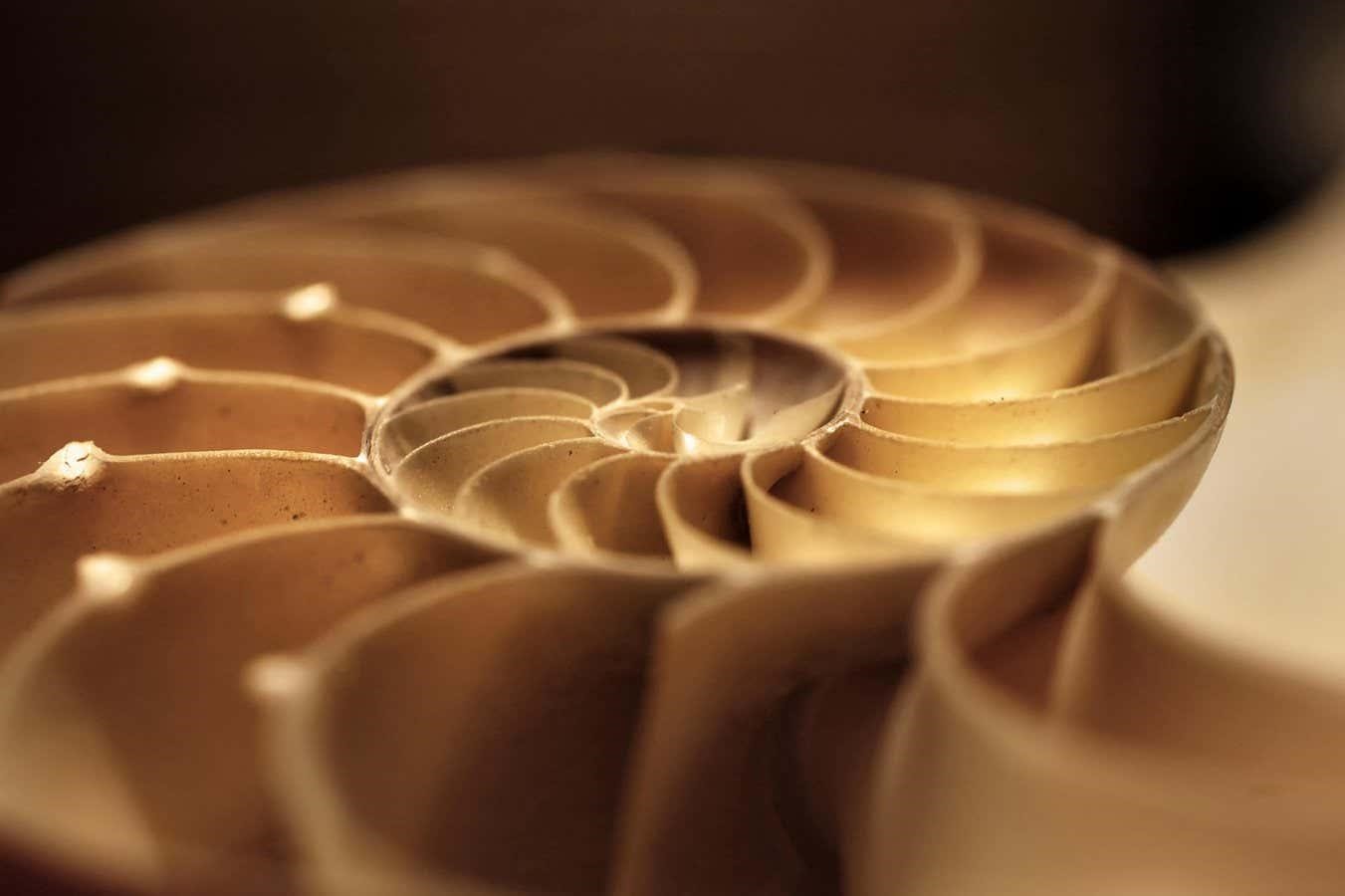The mathematical study of how repeating tiles fit together usually involves pointed shapes like triangles or squares, but these aren’t normally found in the natural world.
The chambers of a nautilus shell are an example of a soft cell in nature
A new class of mathematical shapes called soft cells can be used to describe how a remarkable variety of patterns in living organisms – such as muscle cells and nautilus shells – form and grow.
Mathematicians have long studied how tiles fit together and cover surfaces, but they have largely focused on simple shapes that fit together without gaps, such as squares and triangles, because these are easier to work with.
It is rare, however, for nature to use perfectly straight lines and sharp points. Some natural objects are similar enough to straight-edged tiles, known as polyhedrons, that they can be described by polyhedral models, such as a collection of bubbles in a foam or the cracked surface of Mars. But there are some curved shapes, such as three-dimensional polygons found in the epithelial cells that tile the lining of blood vessels and organs, that are harder to describe.
Now, Gábor Domokos at the Budapest University of Technology, Hungary, and his colleagues have discovered a class of shapes that describe tilings with curved edges, which they call soft cells. The key to these shapes is that they contain as few sharp corners as possible, while also fitting together as snugly as they can.
“These shapes emerge in art, but also in biology,” says Domokos. “If you look at sections of muscle tissue, you’ll see the cells having just two sharp corners, which is one less than the triangle – it is a very special kind of tiling.”
In two dimensions, soft cells have just two sharp points connected by curved edges and can take on an infinite number of different forms. But in three dimensions, these shapes have no sharp points, or corners, at all. It isn’t obvious how many of these 3D soft cells, which Domokos and his team call z-cells, there might be or how to easily make them, he says.
After defining soft cells mathematically, Domokos and his team looked for examples in nature and discovered they were widespread. “We found that architects have found these kinds of shapes intuitively when they wanted to avoid corners,” says Domokos. They also found z-cells were common in biological processes that grow from the tip of an object.
One of the clearest examples of z-cells was in seashells made from multiple chambers, such as the nautilus shell, which is an object of fascination for mathematicians because its structure follows a logarithmic pattern.
Domokos and his team noticed that the two-dimensional slices of each of the shell’s chambers looked like a soft cell, so they examined nautilus shells with a CT scanner to measure the chambers in three dimensions. “We saw no corners,” says Domokos, which suggested that the chambers were like the z-cells they had described mathematically.
“They’ve come up with a language for describing cellular materials that might be more physically realistic than the strict polyhedral model that mathematicians have been playing with for millennia,” says Chaim Goodman-Strauss at the University of Arkansas. These models could improve our understanding of how the geometry of biological systems, like in soft tissues, affects their material properties, says Goodman-Strauss. “The way that geometry influences the mechanical properties of tissue is really very poorly understood.”
For more such insights, log into www.international-maths-challenge.com.
*Credit for article given to Alex Wilkins*


